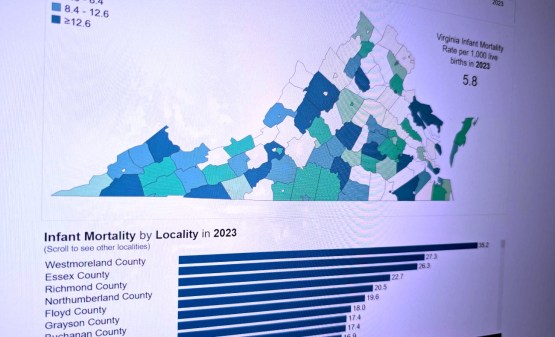Indiana uses data analytics to try to reduce infant mortality

When Indiana’s chief information officer, Paul Baltzell, found out that the state had one of the highest infant mortality rates in the country at 7.7 deaths per 1,000 live births, he knew that his team could use data to address, and perhaps eventually solve, that problem.
“We’ve been in this position for about 20 years,” Baltzell told StateScoop. “That’s not acceptable. I don’t think folks want to be in that position.”
Baltzell said ensuring the health of babies up through their first year of life holds special significance for him, after he and his wife experienced multiple failed pregnancies. “If we can help solve that for some people with data, even if it means saving one kid, that’s great.”
At the SAP Federal Forum in Washington, D.C., March 12, Baltzell spoke on how the state used a variety of SAP’s data tools to help address the problem and present a list of recommendations to the state’s budget office, as well as to the governor, who has made reducing the state’s infant mortality rate one of his priorities.
“We actually were able to drive the programs in this budget session based on our report that came out in January,” Baltzell said. “The programs that we put forward in that budget session were driven based on what we found in the data science on this based on the programs that we have found to be successful and these are the things that maybe we’re missing that should be done and could have a direct correlation.”
Baltzell’s team used SAP’s Data Services platform to collect the data, then funneled it into SAP HANA, which organizes and analyzes the data with the help of a data scientist. After analysis, the data is exported for officials through SAP Lumira and SAP Business Opportunities Explorer.
Through this process of analysis, Baltzell’s team statistically quantified the importance of various factors, like the frequency of prenatal visits, to the success of the baby. The team found that approximately 10 prenatal doctor visits was the best number for success.
After determining some of the potential factors in infant mortality, like prenatal visits, Baltzell said his department then made recommendations to other agencies in government who coordinate advertising and public outreach for this particular issue.
“We actually have targeted our advertising based on the geographic location and the particular issues in that area,” Baltzell said. “Although, we found that prenatal is one that’s consistent across the whole state. If we give them 10 visits, that’s going to drastically reduce the rate.”
The data analysis also found that some victims of infant mortality actually have access to the medical benefits that they need through programs like Medicaid, but instead have difficulty getting access to the doctor’s offices themselves due to transportation issues. In response to that, Baltzell’s team has allotted a couple million dollars for the development of a mobile application dedicated to reducing the state’s infant mortality rate.
“We’re going to create an app that will allow people to connect all of the services that we’ve proven are successful, and we’re going to leverage a lot of the SAP technology to do that,” Baltzell said. “We want to make sure that we’re directly connecting them not just with state services, but with services provided by healthcare institutions and not for profit organizations.”
This collaboration outside of the state government institution is essential to helping to address the problem, Baltzell said.
“We’ve got to leverage everything we’ve got,” Baltzell said. “If we work together, we’ve got a lot greater chance of success.”
The initiative to tackle the infant mortality rate issue was initially announced alongside the Governor’s Management and Performance Hub last year.






